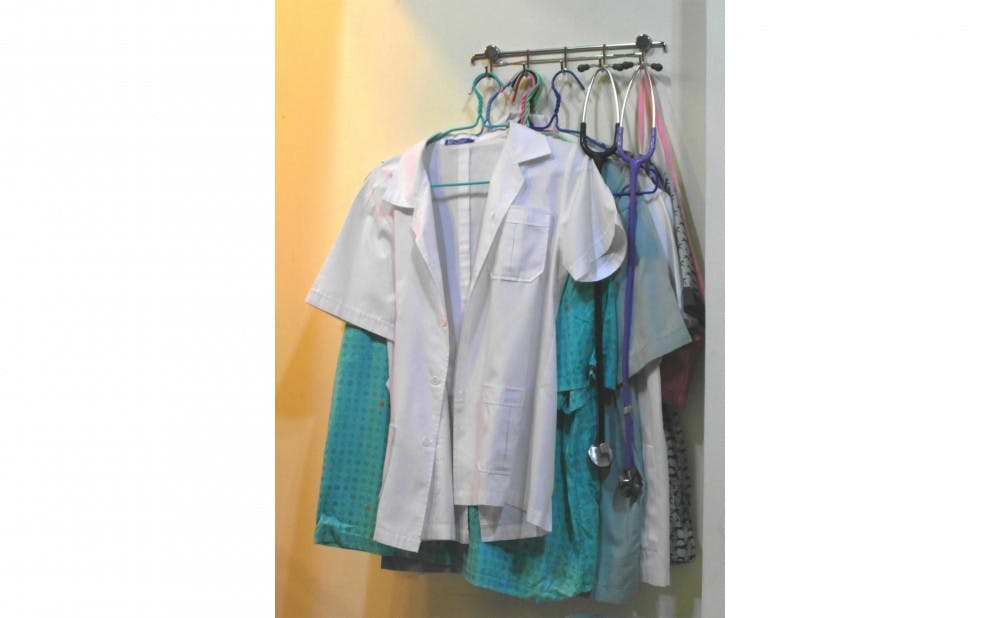Simply entering a hospital room can put someone at risk of contamination, according to a new Duke study which found that scrubs could carry disease-causing germs.
Dr. Deverick Anderson, associate professor of medicine, led the research study—which used molecular analysis to determine whether antiseptic scrubs decreased contamination compared to standard surgical scrubs. In the study, researchers examined the scrubs at the beginning and end of nurses' shifts and looked at disease cultures in the patients' rooms. Results showed that environmental factors can often cause scrubs to become infected.
“We were interested in this study because prior publications suggested that antiseptic-impregnated textiles and materials can decrease contamination, but evidence was not clear,” Anderson wrote in an email.
Healthcare clothing can often be contaminated during clinical care, and the bacteria remains on its fabric. However, some textiles have antiseptic properties, including nanoparticles, to reduce the risk of infection.
The study involved tracking 40 nurses in the Duke Medical Intensive Care Unit and Surgical Intensive Care Unit for three shifts each to see how much better antiseptic scrubs really were. Subjects received three different types of scrubs to wear during their shift, so that researchers could analyze germs levels longitudinally.
The researchers found 22 transmissions of the same bacteria, with six from patient to nurse, 6 from room to nurse and 10 from patient to room. No nurse to patient transmissions were found. However, the results still concerning because the contamination of healthcare provider clothing can lead to contamination of hands and the overall hospital environment.
In addition, antiseptic scrubs did not lead to decreased contamination of nurses' clothing.
“We believe there is growing evidence that the environment needs to be evaluated in these types of studies, and that hadn’t been done before,” Anderson wrote.
The most common organisms found were Methicillin-sensitive Staphylococcus aureus, Acinetobacter baumannii and MRSA. Anderson wrote that the study reinforces past conclusions about basic infection prevention, such as hand washing and wearing disposable gowns and gloves, being essential for minimizing the spread of germs.
Researchers concluded that a transmission triangle between patients, the environment and the healthcare professional can largely account for the spread of bacteria.
“People contaminate their environment with their bacteria," Anderson wrote. "Hospital rooms are particularly prone to this because sick patients don’t move from beds often and we aren’t always able to clean them as well as we would like.”
Get The Chronicle straight to your inbox
Signup for our weekly newsletter. Cancel at any time.

